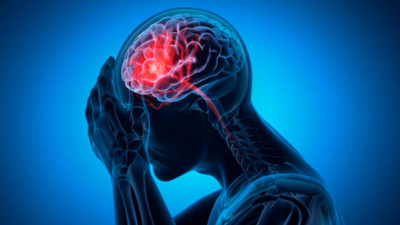A stroke occurs when the blood supply to part of the brain is suddenly interrupted. This causes brain cells to die. Most strokes, about 85%, are caused by a blocked blood vessel and are called ischemic strokes. The remaining 15% are hemorrhagic strokes, caused by a ruptured vessel leading to bleeding. According to the World Stroke Organization, one in four adults over 25 will experience a stroke in their lifetime. Nearly 30% of survivors are left with permanent disabilities.According to the World Stroke Organization, one in four people over 25 will have a stroke at some point in their lives, and about 30% of those who survive will have lasting disability. But the stroke is just the start. What happens in the first 90 days after a stroke has a big impact on the remainder of a survivor’s life. This time is not just a time to recuperate; it is when the brain is at its best for repairing, rewiring, and adapting. The actions taken during these three months will decide whether a survivor may live independently again or has to deal with limits for the rest of their life.
Why the first 90 days are important
After a stroke, the brain goes through a time of increased neuroplasticity, which means it can make new connections and change the way it works. This ability to adapt reaches its highest point in the first 12 weeks. If rehabilitation takes too long or follow-up is not continuous, the chances of recovery can go down by almost half. Structured early intervention, on the other hand, makes things much better. Mobility, speaking, swallowing, cognition, and emotional stability all improve, and the odds of getting your independence back typically double.
Early rehabilitation
It is very important to know when to start rehabilitation. Therapy should begin as soon as the patient is medically stable, preferably within 24 to 48 hours. At this point, even short, repeated exercises can make a big difference in how well you can do things. Rehabilitation is not an option during these first few days; it is life-changing.Physiotherapy helps people move and balance again and stops stiffness and problems like contractures from happening. Occupational therapy helps survivors regain their independence by focusing on basic daily tasks including bathing, eating, dressing, and writing. Speech and swallowing therapy keeps people from losing their ability to talk and lowers the danger of aspiration, which keeps them safe and dignified. Cognitive and psychological support helps with memory problems, sadness, and mood swings, which can make rehabilitation harder. Every type of therapy helps survivors build a base that lets them regain their independence.
Continuity of care
Discharge does not mean the end of recovery. In reality, the biggest drop usually happens after patients leave the hospital, mostly because of broken follow-up. For the first 12 weeks, it’s important to keep getting care so that the progress made during inpatient rehab stays.A comprehensive strategy for post-stroke care begins with scheduled follow-up visits with neurologists and rehabilitation specialists. Home-based physiotherapy or nursing support helps maintain progress outside the hospital. Patients should be monitored closely for complications such as infections or pressure sores. Strict adherence to prescribed medications, including antiplatelets, statins, and antihypertensives, is essential for recovery and prevention.Survivors who get regular medical and rehabilitation care for the first three months are twice as likely to be able to live on their own again. Continuity makes ensuring that activities keep going, problems are fixed quickly, and the patient stays on track to become independent.
Avoiding a second stroke
There is a substantial risk of it happening again. Almost 25% of those who have had a stroke will have another one within five years. The first 90 days are when they are most likely to have another one. This risk can be greatly reduced by acting quickly.Controlling blood pressure and blood sugar, managing cholesterol, quitting smoking and drinking, staying active and at a healthy weight, and following a diet established by healthcare professionals are all important ways to prevent disease. Adding these steps to the recovery plan not only stops a second stroke, but it also improves long-term survival and quality of life.Family and caregivers must be actively involved in any rehabilitation plan for it to work. They are the daily link between treatment sessions and real-life use, leading exercises, keeping an eye on medications, and watching for changes in mood or behavior. Their involvement speeds up the healing process.At the same time, caregivers require clear instructions. Lack of clarity or burnout might make it hard to move on. A caregiver who knows a lot about post-stroke care and is trained in it becomes part of the clinical team, helping with rehabilitation at home and making the house a good place to recuperate.
Home health care and technology
As hospital stays are shorter, home-based care becomes more and more important. Nurses, physiotherapists, speech therapists, and doctors who have been trained to work with stroke patients may now give systematic rehabilitation at home, making sure that the progress accomplished in the hospital does not go away.Tele-rehabilitation, virtual consultations, and remote monitoring of vital signs make it possible to get continuous, high-quality care without having to go or pay for it. These tools help survivors stay on track and let specialists’ step in quickly when problems come up.The first few days after a stroke determine the course for the rest of your life. Early rehabilitation keeps function, continuity of care strengthens it, and preventive actions lower the likelihood of it happening again. Family involvement and new home-based care options ensure that growth keeps happening outside of the hospital.Every therapy session, every follow-up appointment, and every workout is important. The first 90 days determine whether a survivor can walk on their own, talk well, and live with dignity, or if they will always need help. The decisions taken during this time are not small; they have effects that endure a lifetime.Dr. C Rajesh Reddy, Neurologist, Apollo Hospitals
